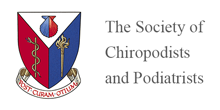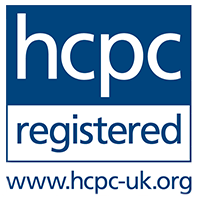Corns
Focus on …Hard Corns
There are several types of corn, but the commonest form is the hard painful lump which forms on a pressure area, often on the joint of a toe or the ball of the foot. It has a deeper, central area of very hard keratinised skin. They are caused by pressure; sometimes recent pressure from tight or damaged shoes or hosiery, but often a prominent joint or a mechanical imbalance result in pressure even when good footwear is worn.
Occasionally corns or calluses can become inflamed or infected. If this happens then your skin around the corn (or callus) will become red and sore. Inflammation can usually be settled by rest and protecting the area, infection may settle with dressings. but in severe cases may require treatment with antibiotics.
If you develop a painful corn or callus it is best to get expert advice from a person qualified to diagnose and treat foot disorders (a podiatrist – also called a chiropodist). You should not cut corns yourself, especially if you are elderly or have diabetes.
Chiropody / Podiatry
The thickened skin of a corn or callus can be pared down by a podiatrist by using a scalpel blade. The pain is usually much reduced after the corn or callus is pared down and the pressure on the underlying tissues eased. Sometimes, repeated or regular trimming sessions are needed but in some cases it may not return if you use good footwear.
Self treatment
If the skin seems to be thickening up again, a recurrence may be prevented by rubbing down the thickening skin with a pumice stone or foot file once a week. Many people can do this themselves. It is best to soak your foot in warm water for 20 minutes to soften the thick skin before using a pumice stone, a foot file is best used when the skin is dry. A moisturising cream used regularly on a trimmed corn or callus will keep the skin softened and easier to rub down.
There are several different types of corn remover products, usually containing salicylic acid. Salicylic acid is a keratolytic, which means it dissolves the protein (keratin) that makes up most of both the corn and the thick layer of dead skin which usually tops it. It is important to use these products as directed, as the acid is quite potent. All these treatments will turn the top of your skin white and then you will be able trim or peel away the dead tissue.
I do not recommend use of these products to my patients, but if you wish to use them please note they should not be used if you have diabetes or have poor circulation. This is because your skin is less likely to heal well after using salicyclic acid and a wound can develop.
Footwear
Tight or poorly fitting shoes are thought to be a major contributor to corns and calluses. Sometimes a rough seam or stitching in a shoe may rub enough to cause a corn. The aim is to wear shoes that reduce pressure and rubbing on the toes and forefeet. Shoes should have plenty of room for the toes, have soft uppers and low heels. In addition, extra width is needed if corns develop on the outer side of the little toe. Extra height is needed if corns develop on the top of abnormal toes such as ‘hammer’ or ‘claw’ toes.
Correcting poor footwear will reduce any rubbing or friction on your skin. In many cases, a corn or callus will go away (over time) if rubbing or pressure is stopped with improved footwear. It is not always new shoes that cause problems ; sometimes a trusted older shoe will develop a split or rough area on the inside at a pressure point, or shows stretch over time, so that friction begins to occur when walking.
Pads and toe protectors
Depending on the site of a corn or callus, a cushioning pad or shoe insole may be of benefit. For example, for a callus under the foot, a soft shoe inlay may cushion the skin and help the callus to heal. If there is a corn between your toes, a special sleeve worn around your toe may ease the pressure. A special toe splint may also help to keep your toes apart to allow a corn between toes to heal. A podiatrist will be able to advise you on any appropriate padding, insoles or appliances you may need.
Surgery
If you have a foot or toe abnormality causing recurring problems, an operation may be an option if all else fails. For example, an operation may be needed to straighten a deformed toe, or to cut out a part of a bone that is sticking out from a toe and is causing problems. If you need an operation then you can be referred to a surgeon who will be able to discuss this with you in more detail.




